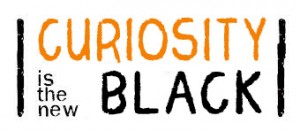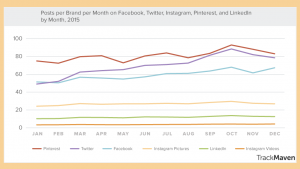
It’s no secret that content marketing will play a HUGE role in 2016 and beyond.
Aside from the fact that people these days consume a lot of content in different forms (text, video, images, podcasts, etc.), content marketing has plenty of benefits that include: brand awareness, customer retention, and lean nurturing. If businesses and brands play their cards right, their content could even result in real conversions.
One of the most popular content forms today is still blog articles. According to an article from Buzzsumo, blogs are important for 62 percent of B2B companies. Aside from case studies and white papers, blog posts can entertain, educate, and keep customers. So if you don’t have a company blog yet, it’s not too late to make one.
But how do you begin? What if you’re not a good writer? Or what if you are but online readers don’t seem to think so (i.e. your posts are not getting enough reads)? Don’t worry: let these six tips be your guide during your blogging journey.
#1 Don’t Forget To Create an Outline
Once I have a topic in mind, I quickly jot down possible headline titles along with a quick outline.
Think of it like blueprints for a house. Would you build your home without one? With blueprints, you can see what goes where and how the finished product would look like. The same is true for outlines. The biggest reason why I take about five minutes to write one is because I want to remain consistent – no matter how long my article is.

Outlines are flexible. They don’t need to look a particular way. Make them as simple or as detailed as you like. The important thing to remember is that they’re not written in stone. If you want to change something in the middle of your writing, go ahead!
#2 Mind Your Sources
Whether it’s a link or an image, ensure that you give proper credits. The last thing you want is to receive an email for a lawsuit. For SEO purposes, sources can be inserted as hyperlinks with the right anchor texts. If you want to be more accurate however, you may cite the author of the piece and link to it. The latter is better, especially if you’re referring to educational materials such as research papers.
Another option is to directly quote with the name of the source. If you found something on social media that you want to include in your content (like Slideshare presentations), embedding them is a better approach as you give the creator not only credits but link juice as well.

If worst comes to worst and you find yourself facing copyright allegations, one of the first things you should do is verify the claim. What work are they referring to? What sort of infringement violation are they referring to? Is the material listed under public domain? If you can take down the content or replace it to appease the other party, then all is well and good. But if they refuse to negotiate, ask professional legal help.
Don’t worry too much, most legal offices nowadays offer free consultation services. Look for a reputable lawyer (if you don’t have one yet) who can help you take the next viable steps.
What if it’s the other way around and you found someone else stealing YOUR content? Usually, a call or email to the blogger or webmaster should be good enough to correct matters. If that doesn’t work, you may contact Google to report copyright infringement. Use their support page to ask content to be removed from their services. This is not going to guarantee that it doesn’t happen again in the future, but at least, you’ll have an idea of how to handle things more carefully next time.
#3 Make It Easy To Scan
This doesn’t mean making list posts forever. But including elements such as bullet points, as well as cutting paragraphs into easily readable chunks would make your content cleaner and more enjoyable.
Another reason to do this is because most online users have a tendency to share content without really reading them. Admit it: don’t you also scan stories instead of reading them all the way? Sure, some folks will save them for later reading. But when it comes to everyday hustle and bustle, most folks would prefer to quickly scan content and then decide whether or not to share it on social media.

So do your audience a favor and make it easy for them. Aside from bullet points, include charts and graphs. Emphasize important aspects by writing them in BOLD. Highlight quotes for fast sharing. Format your work the way YOU would want to read content on the Web.
#4 Cut, Cut, Cut
“There are two types of people in this world: those who can edit, and those who can’t.” ― Jarod Kintz, This Book is Not FOR SALE
After writing for some time now and having the pleasure of working with various editors, there’s one crucial lesson that I value most: edit until you bleed. The most painful and time-consuming task for me is NOT writing the content itself, but rather, editing it (particularly if it’s to be published somewhere else).
Like writing, you need to be skilled in the art of editing your own piece. One of the things that work absolutely well is reading an article backwards. This helps you spot errors that you might have missed if you would read normally.
Cutting your content may sound irksome, but according to the Public Relations Society of America (PRSA), “paragraphing is a matter of the eye”, which means people will tend to back out of reading your work if it looks too long. So be your own ruthless editor. Cut, cut, and cut until you’re left with nothing but the bare bones. After all, it’s the main points that truly matter.
#5 Deliver What You Promise
As someone who gets excited about great content, I often feel frustrated at blog articles that say one thing on their headlines and then deliver a wholly different concept.
This goes back to tip #1 about creating outlines. If you have a guide, you’ll have little to no trouble sticking to the original idea – even if you digress at times. That, or the headline was simply created as link bait.
Don’t make promises you can’t keep! If you state that you are writing about 25 online tools for content marketing, stay true to your word and deliver 25 tools. Don’t include services that have nothing to do with content marketing or cut your list short. No one likes feeling that they were duped: so don’t do the same to your readers.
#6 Take Enough Time
I believe you can’t rush perfection – but in this industry, time is of the essence. In fact, it’s the currency. As time is vital in content marketing, you want to make sure that you make excellent use of it.
When I say take “enough time”, it means three things:
- Be efficient in handling time before and after content creation
- Remaining within the schedule
- Avoiding haphazard work
A good example of being efficient during the content creation process is when you are about to write your piece. If you commute to and from work, you can grab the chance to make an outline, insert ideas, and look for resources. By the time you get to the office, you can simply focus on writing.
Second point: good writing cannot be rushed – BUT that doesn’t mean missing important deadlines. This is crucial if you’re about to publish seasonal content. By now, you should be familiar with your writing habits. Divide tasks if you must as long as you deliver content on time.
Last, just because you have a deadline doesn’t mean you should submit slapdash work. This will not only reflect badly on you as a professional, but it will also discourage editors and fellow content marketers from working with you. If you only have three days to finish a piece, work on it with every skill you have.
Last Words
For businesses that already have a blog, be sure to update it regularly (even once a week is fine). Blogging may not seem like much, but for your potential clients and frequent site visitors, it’s the bridge that connects you to them. So make every word count.
Digital & Social Articles on Business 2 Community(82)








